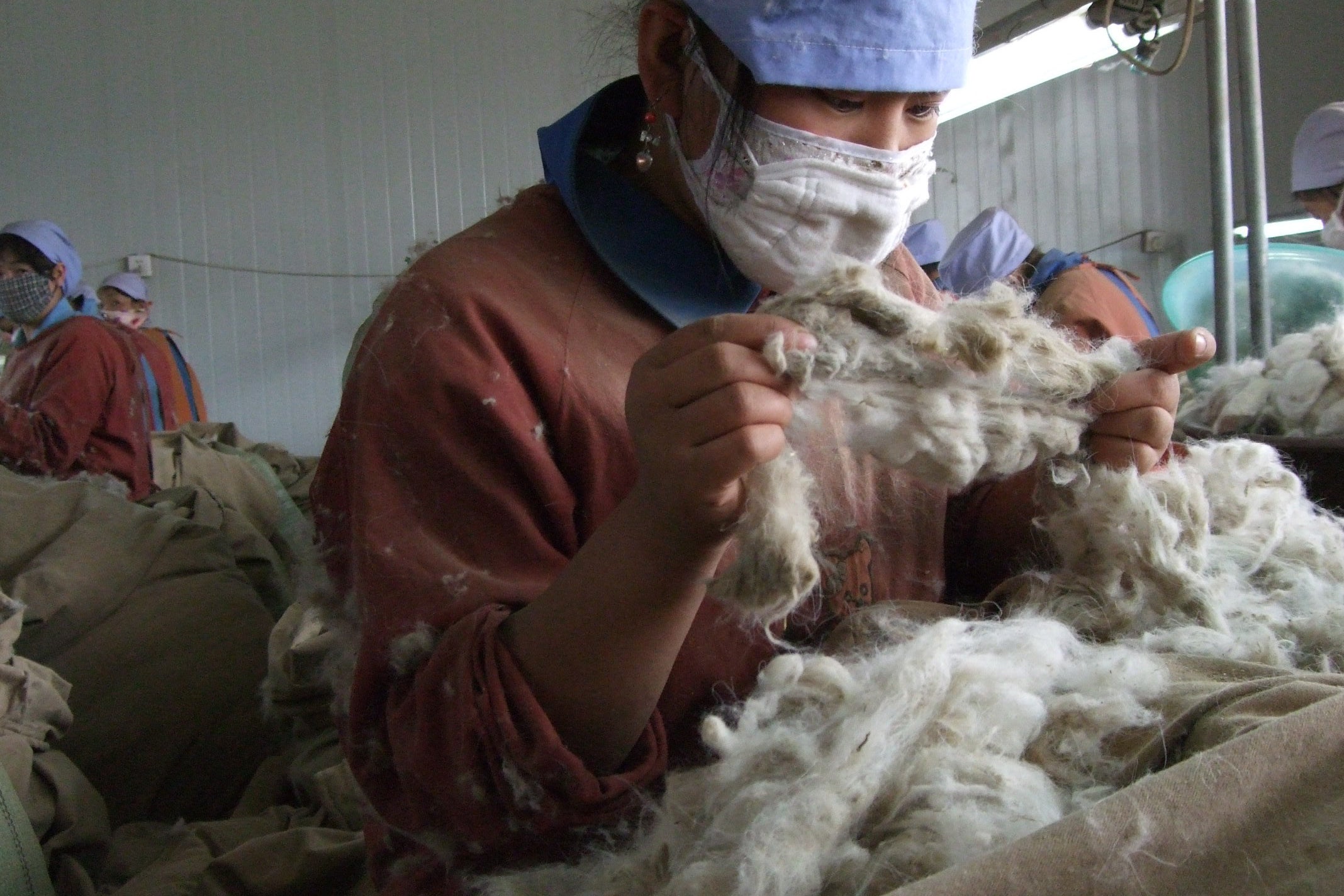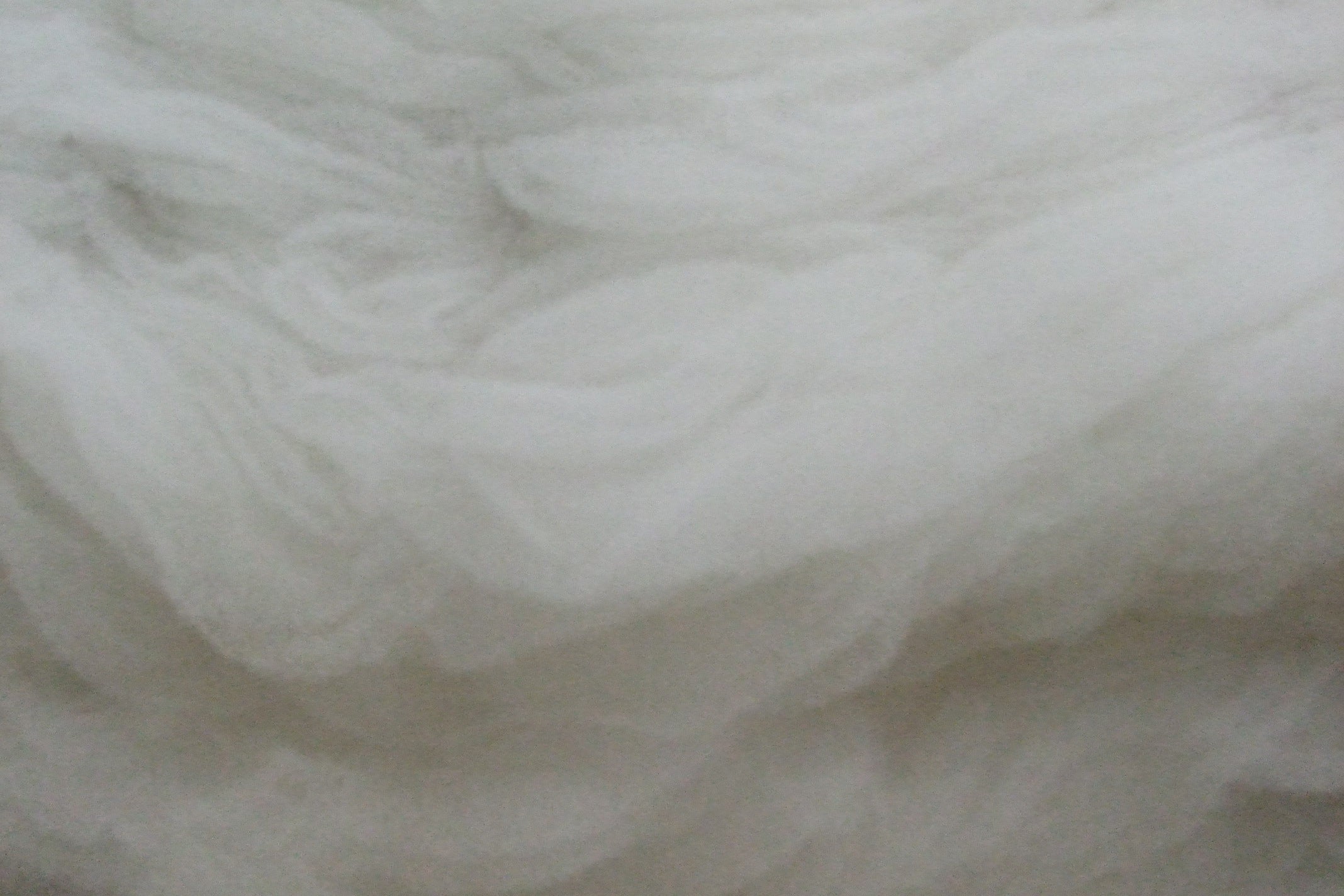清洗羊绒头发时,棕色的浑浊水逐渐变成纯白的棉絮。

清洗羊绒头发
棕色的浑浊水逐渐变成纯白色的棉絮。
选定的羊绒要经过洗涤工序。
当我走进羊绒洗涤室时,里面潮湿闷热,弥漫着一股动物的气味。羊绒被放入一台约50米长的洗衣机里,反复洗涤。起初,水呈棕色浑浊状,但随着洗涤的进行,水逐渐变得清澈,洗净晾干的羊绒也洁白如雪。然而,此时由于羊绒的绒毛,还看不到它蓬松柔软的质感。
塑形(Seimou)。
这是羊绒特有的最困难的制作过程。
除了羊绒之外,其他羊毛纱线,例如绵羊、骆驼和羊驼毛,都是在收获后直接纺纱加工成线。然而,羊绒是由收获的羊毛中硬毛(称为“刺毛”)和绒毛(称为“绒毛”)混合而成。
只需去除绒毛即可制成柔软蓬松的羊绒。将绒毛与打结的毛发分离,并只去除绒毛的过程称为绒毛处理过程。
在羊绒填充过程中,绒毛处理是最重要的环节,因为它能最大限度地减少纤维断裂和损伤,并彻底去除刺痒的绒毛。这一工序技术难度很高,毫不夸张地说,原材料的品质取决于绒毛处理技术的优劣。
颜色、纤维粗细和长度是羊绒原毛最重要的质量标准。羊绒原毛较长,但在加工过程中会因纤维断裂而变短,因此可以说,羊绒的品质取决于加工过程中防止纤维断裂的技术。
拔下的鬃毛可有效用作田间饲料和其他用途。
当然,在羊绒定型过程中,保持湿度在67%到68%之间非常重要,因为如果羊绒太干,纤维会受损,容易断裂。这在冬天很好,但在夏天非常炎热潮湿,工作起来也很费力。
直到 20 世纪 70 年代左右,日本纺纱公司通常进口粘土羊毛,并在公司内部完成从分拣、洗涤到下一步的整理等所有工序。
如今,中国不再出口原毛以维持当地就业,也不再对羊毛进行分拣、洗涤和加工等工序以增加其价值,因此,当我们谈论羊绒时,我们谈论的是羊绒加工原料。
世界各地的纺纱公司现在都从中国购买羊毛加工所需的原材料,而这种加工方式在日本或欧洲已经看不到了。







